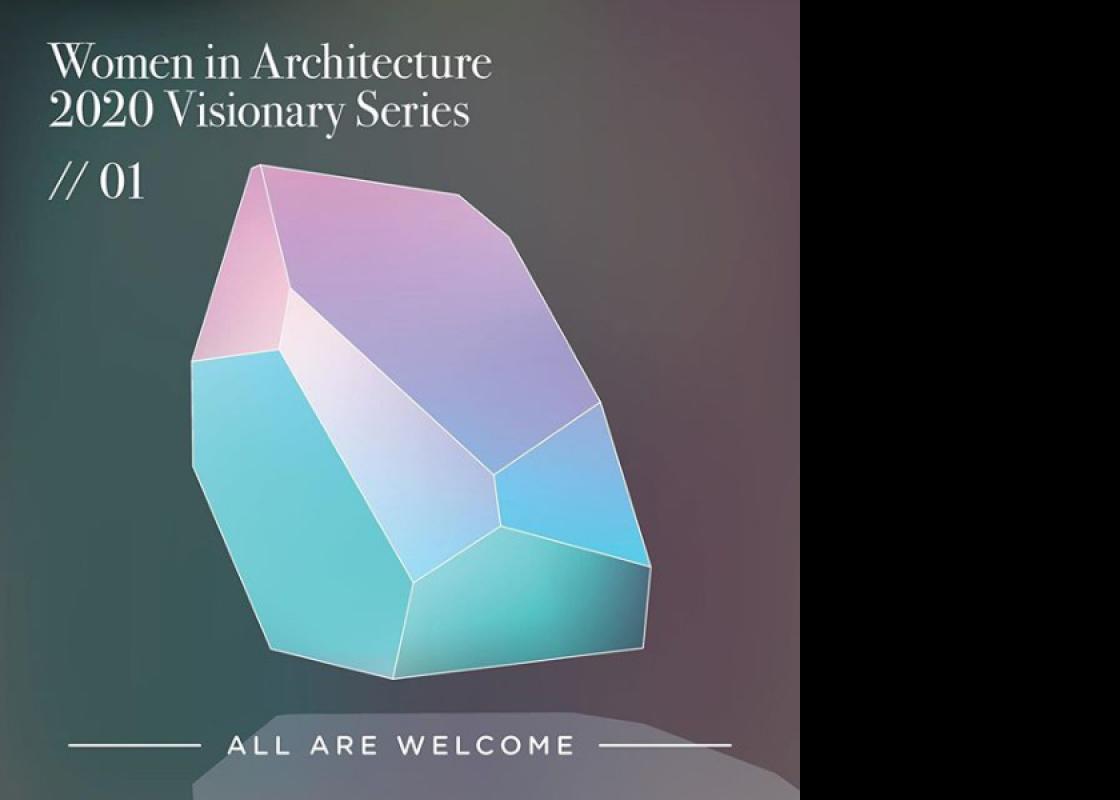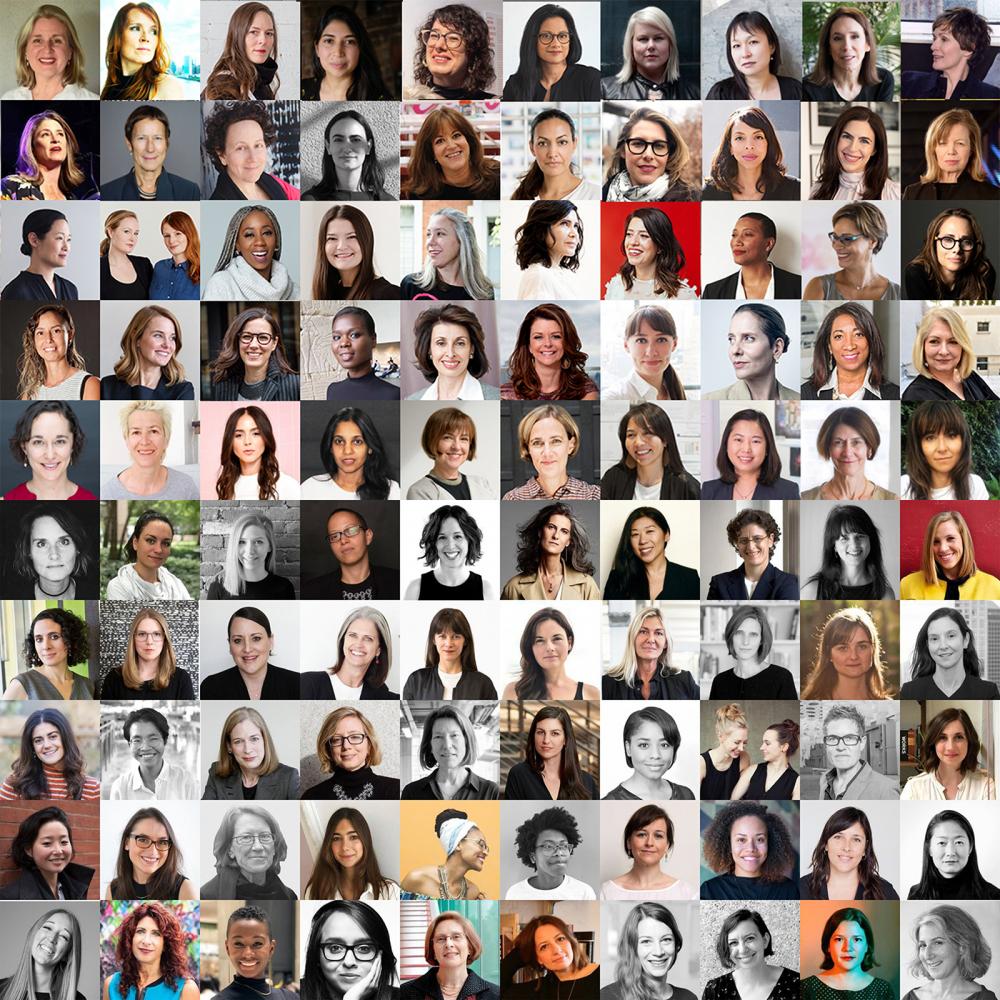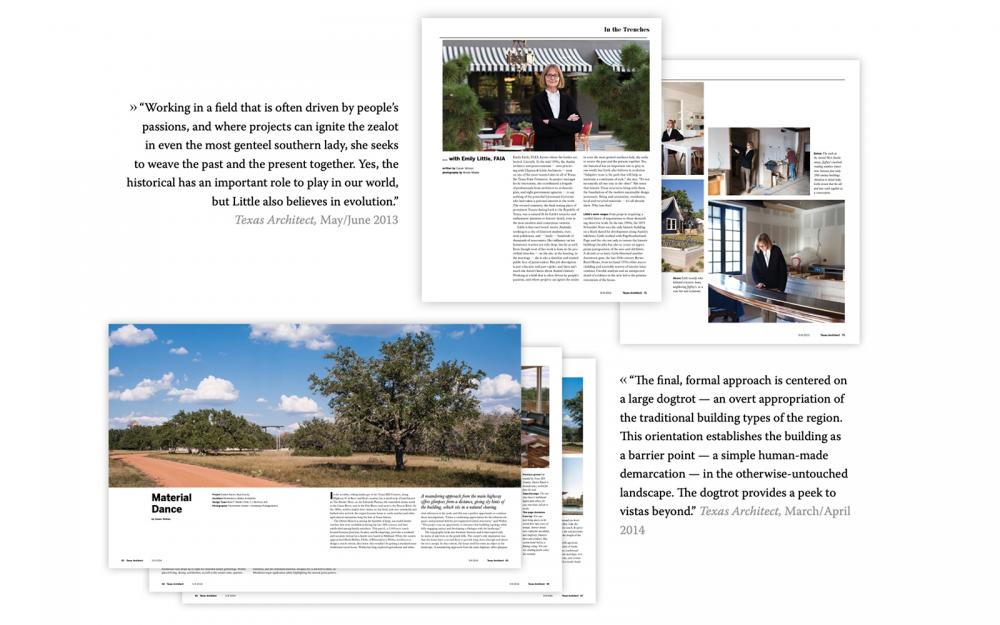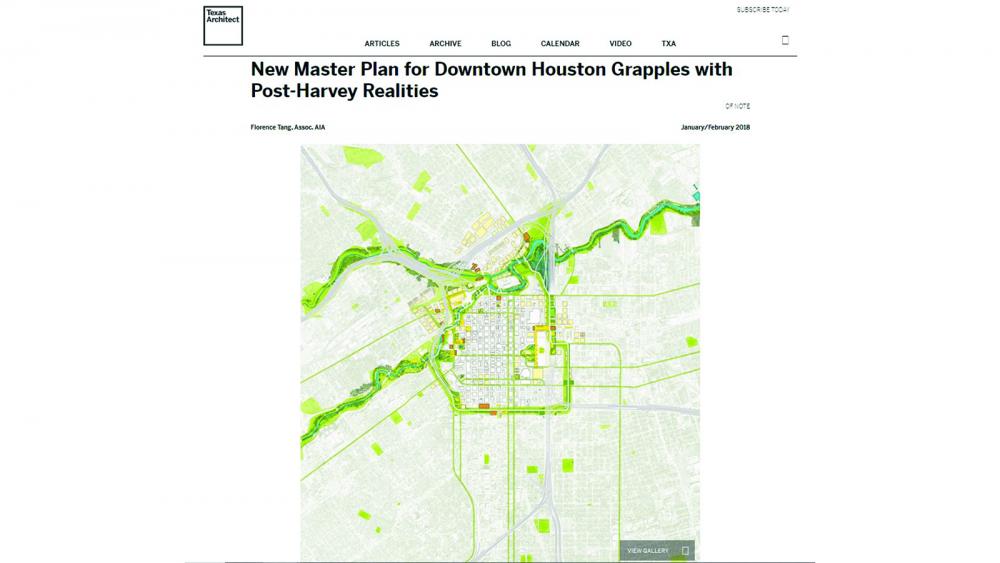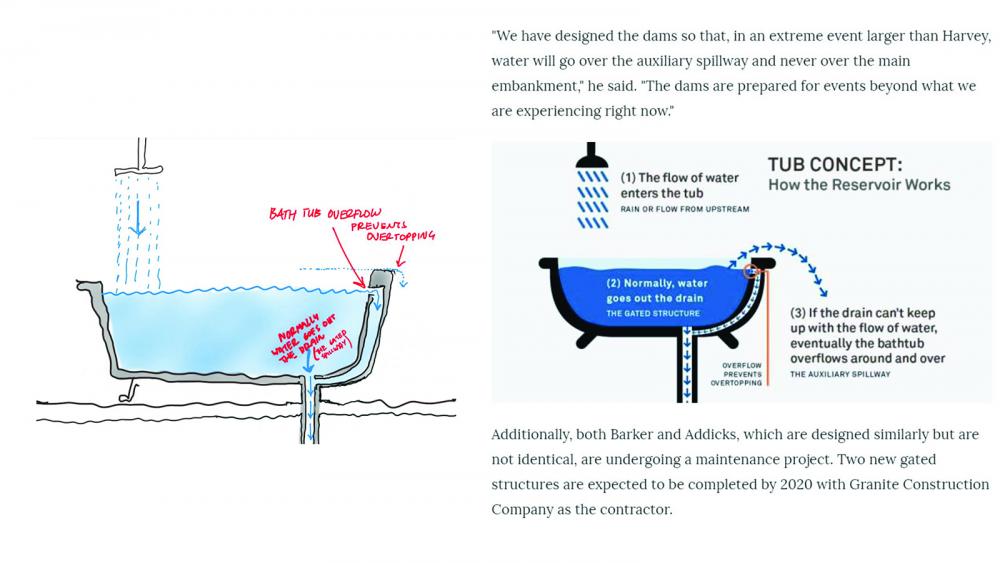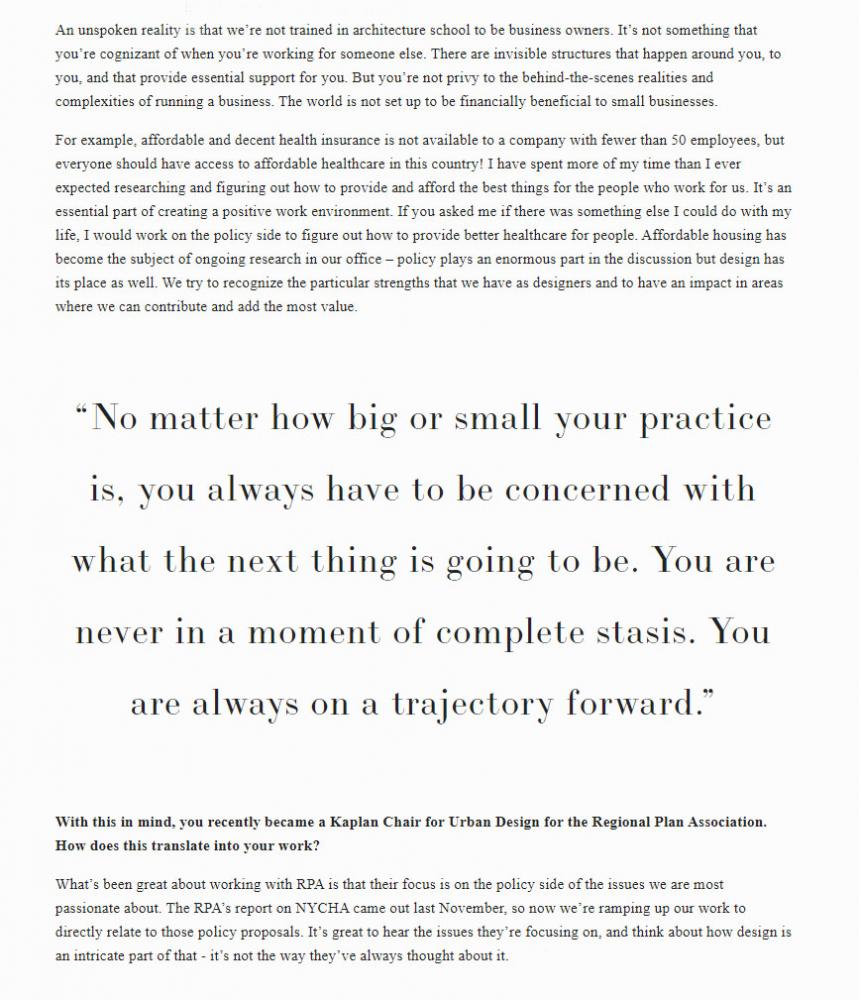As part of their Shaping the Conversation programming, on May 7, 2020, the AIA Austin Women in Architecture Committee (WiA) held Writing Architecture, a virtual conversation focused on writing about architecture. Because writing has long been wielded as an effective means for sharing new ideas in the realm of architecture, writing is where AIA Austin WiA’s Visionary Series began. More information about AIA Austin WiA is available here.
Writing Architecture featured a panel of three professionals who work within the world of architectural publication. Caitlin Dashiell (CD) is a Houston-based architectural designer and editor focused on amplifying the voices of women in design and creating spaces by and for the public. Florence Tang (FT) is an architectural designer, project manager, journalist and design activist trained in architecture and mass media studies. She serves on the RDA’s 2020-2021 Board of Directors. Canan Yetmen (CY) is an Austin-based writer and consultant who works exclusively with the design industry.
They continued their conversation with participants through a Q&A after the presentation ended. An edited version of their exchanges appears below.
To learn more about the AIA Houston Women in Architecture committee, visit their website. On August 6, they are hosting a presentation about the benefits of a diverse and inclusive workforce in architecture, engineering, and construction; register to attend here.
Wendy Dunnam Tita: How have you reconciled or succeeded in the desire to tell stories about female architects that are not stories about “gender” first but stories about “the work” first?
CD: I love this question. We structure Madame Architect interviews to focus on foundational, groundwork questions rather than leading anyone to a pre-determined answer. Instead of focusing the lens on the hurdles of being a woman in design, we ask interviewees about their first interest in the built environment, what they learned in school, their biggest highlights and challenges, who they admire, and what advice they have for others. By asking these larger questions, we may reach topics like motherhood organically. This centers the conversation around what these women value and gives them a platform to discuss what has impacted their life and career most. We work to amplify the voices of women in architecture, yes, but with the goal of soon reaching the point where we’re all just “architects.”
Amanda Dean: Do you ever feel pressure to be polite when writing about women’s issues?
CY: We are still talking about the same "women's issues" now that we were discussing when I started hanging around the profession twenty-five years ago. So maybe we have been too polite. Being aggressive or confrontational isn’t necessarily the right tone, but certainly a willingness to say things that might make some uncomfortable and to speak truth to power has to be part of the strategy.
FT: When I was younger, yes. Now? No. These are no longer women’s issues, but societal issues. And there is much work still to be done. We need to bring our chairs to the tables, take part of the conversations, and lead in changing the narrative.
CD: There’s a lot of pressure to be polite, of course, from the systems that are currently in place—those that have led to the disparities we have in the profession. It’s important for me to build a sense of rapport with the women I speak to; this then leads to transparent, honest communication about the high points and the hardships that they go through, and everything in between. The stories on the Madame Architect site stay true to those conversations. I’ll take an honest interview over a “polite” one, every time.
Sara Costa: What makes an architect, as a biographic subject, interesting to you?
CD: Architecture encompasses so many things. It’s my firm belief that architects now more than ever are expanding the boundaries of what architecture can and should be. By telling the stories of all the women who have helped our profession develop, who are taking many different routes to get to where they are now, we can help more women stay in the field. The more women I talk to, the more I realize that many architectural writings, and the narratives that drive how we frame design, unjustly narrow what appears possible in our field. I struggled during my architectural education because I felt as though my voice in the field didn’t fit in. But the more stories we tell of women succeeding through previously unconventional approaches, the more our field opens up and welcomes new methods of design.
Shelby Blessing: For those of you with many roles, how do you juggle those roles? I’m interested in writing more but it's hard to find more bandwidth. On a related note, how many articles might you write for free before getting paid for one?
CY: As someone who earns a living writing and also writes a lot, effectively for free—novels don’t pay any bills—I've had to learn to balance the time for paid work with time for unpaid but highly rewarding work. When I was working on my first book I was talking with an established writer about my writing habits: I would do all my paid work first and then work on the novel. She told me that I should always give the "most important" work my best time and that I had to protect that time fiercely. So I gave my best writing time (very early in the morning) to my fiction and kept it sacred. It made a huge difference.
I think writing for free can build your portfolio and your chops and be part of the process if you need to get some legitimate experience under your belt. Just make sure the things you write for free are challenging and interesting. They should advance you as a writer in some way—use it as training. The more you write, the sooner the balance will shift and you'll start getting paid and you’ll have the confidence to expect payment.
CD: My honest answer is that there is no one method for keeping all of the plates spinning. Approaching these many roles with flexibility as you integrate them into your life is paramount. Give yourself some time and space to explore the why, the how, and the timing of these ideas you’re passionate about nurturing, and do so knowing that you’ll have edit your approach along the way.
I’ve found that a calendar app is useful for establishing upcoming goals and blocking out time for them. I do my best to keep track of these things a week or two in advance. Also, finding a good work environment and supportive coworkers that keep me accountable is important to my sanity. In this work-from-home life we’ve been living recently, it can be difficult to set boundaries on our projects, but it’s also essential. Stay flexible and patient. Know that we’re all still figuring things out as we move into the future too.
FT: We all have 24 hours. You will make time for what is important to you. I don’t encourage writing or working for free. There should be a contract and an agreed upon understanding just like any business transaction. Otherwise it’s volunteerism.
Isabel Fee: Do publications usually give you a say in the photography and drawings that accompany your writing? How does your expertise as a designer come into your collaborations with photographers that help tell the stories?
FT: Every publication works differently but the art, photos, maps, drawings, and text must always be a cohesive package. I usually make suggestions for art, where we can source it, or brainstorm with the editors about how we can illustrate the story in a meaningful way. Sometimes the editor or photographer have ideas for the art. It’s very collaborative. If we are commissioning new art, I don’t let preconceived notions about the story cloud the art’s creation. As I write the piece, I think about the best way to make it sing.
In the case of the post-Harvey dam article that I wrote for Offcite (now Cite Digital) in 2017, it was important to relay simple diagrams that would explain the importance of these critical pieces of infrastructure in time to warn people, so the participation of Evan O'Neil, a graphic designer, was essential to how we packaged that piece. We also made sure we were accurate and concise in delivering this information as this was important to people who might need to get out of harm’s way.
Cindy Black: One of the hardest things to write about is summarizing the approach and interests of one’s own architectural practice. What do you suggest to an architect who is needing to update the design statement about her own firm? Or do you recommend hiring a consultant to help with this task?
CY: This is indeed tricky because people are uncomfortable tooting their own horn and they also can’t really see their work in a broader context—to look at it from outside their experience making it. An easy way to help with this is to sit down with a colleague or a friend and ask them about how they see your work. Maybe repeat this a few times and see what themes/ideas/words come up consistently. The caveat here is if you don't like what you're hearing, you'll need to make an effort to reposition yourself. But that's informative too.
Cat Scott: A critical part of justice work is imagining and describing a future we want. How have you approached writing about the future?
CD: Miriam Peterson, one of my mentors, recounted some sound advice given to her by Billie Tsien when we spoke for her Madame Architect interview, which was something like: “You’re always looking for what comes next.” You still celebrate your accomplishments as they happen, but there’s always a push to search for that next project. All the women we profile are speculating on what they want the future to look like, for themselves and for upcoming generations of designers. The website is about who we want to see in leadership positions, and about having women at every level within a firm or organization; it’s about women seeing a path forward for themselves, regardless of where they are in their careers. Talking about these speculative viewpoints is part of how we bring them into being.
FT: Writing about the future is inherent in design projects since we are trained to envision and imagine the possibilities of improving the world, in dynamic or static ways. I always enjoy understanding the project timelines, what the existing conditions were, and how the project team arrived at their plans for cities or buildings. Understanding data for population growth, transit modality, economic hubs, and political forces along with air and water quality metrics is riveting to me.
More than that, it’s understanding the dynamic people who live in our cities and buildings. The people planning, designing, and building these futures should be a true reflection of the diversity of our societies; that lights the fire in me to keep doing what I do. The work is also about giving a voice to the voiceless who either cannot make their plights known or have been marginalized. My belief is that credible and attentive media coverage will improve the condition we call humanity.


